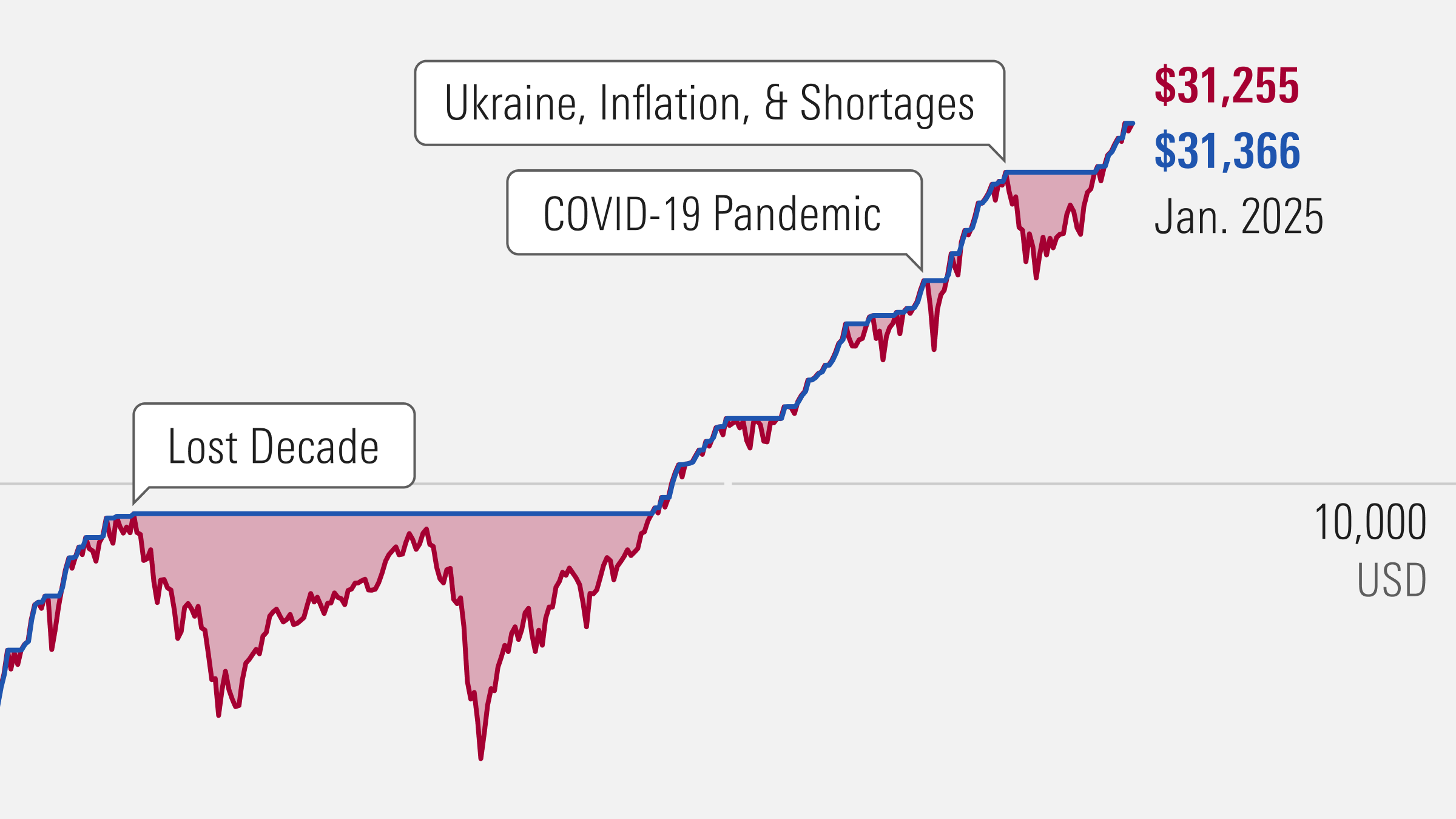Jeremy Glaser: For Morningstar, I am Jeremy Glaser. The market has run up quite a bit in 2013, but that performance hasn't been completely even across sectors. I'm here with Josh Peters, editor of Morningstar DividendInvestor and also our director of equity-income strategy, to look at who has underperformed and if it has created any opportunities.
Josh, thanks for joining me today.
Josh Peters: Good to be here, Jeremy.
Glaser: Let's look across the sectors, particularly those income-producing sectors that you are the most interested in. How has that performance looked in comparison with the broader market so far this year?
Peters: It's funny. Higher-yielding stocks, more defensive stocks, the kind that I like to buy through all points in the market cycle, actually did really well in the first couple of months of the year. Then in May, the Fed started talking about tapering its quantitative easing program, and interest rates started to move up on the long end as a result of that. And a lot of these higher-yielding stocks fell out of favor very quickly.
Now, here, more than 11 months into the year, when you look at sector returns within the market, you actually find that the highest-yielding stocks have turned out to be some of the poorest performers. And REITs are right at the bottom, only a marginally positive in terms of year-to-date total return for REITs as a group, even though they have pretty good dividend yields. It means that prices are actually down slightly.
Also, at the bottom, you'll find telecoms and utilities with not bad average returns kind of in the low double digits, but certainly a far, far cry from what you're getting from the S&P 500 year to date.
Glaser: So, what sectors are doing well then?
Peters: Well, of the four sectors within the S&P 500 that are actually beating the index as a whole this year, three of those--industrials, consumer discretionary and financials--those are in the most cyclical sectors, and typically those are also going to have some of the lowest dividend yields.
They are responding in part to the idea that the economy is improving, and that means faster profit growth. We'll see whether or not that actually materializes in 2014. It seems like we've had letdown after letdown in the last couple of years when it comes to earnings-growth and economic-growth expectations.
Health care ranks at the top of the lists, but there you've got an interesting mix. You've got those Big Pharma companies that do pay good dividend yields as well as biotechs, another with much faster-growing and speculative companies. And for the most part it's still speculative stocks that have carried the health-care sector to the top.
Glaser: You mentioned that the talk of the Fed taper is one of the reasons that these higher-yielding sectors got hurt so bad or are underperforming market, I should say. Are there any other factors you think that play into that, such as valuation or just kind of a change your sentiment. What else is going on here?
Peters: Interest rates are part of it, but I think it's very important to remember that stocks, even stocks that pay big dividend yields, are not actually bonds. When you buy a good high-yield stock, you have the promise of dividend growth as well as capital appreciation going forward that you certainly can't expect from fixed-rate long-term bonds.
But if you also include the economic-growth equation, there is expectation that growth will accelerate, the more conservative companies that pay the bigger dividend yields, they typically don't have as much to gain. It's not as if a faster-growing economy is bad for a company like General Mills or bad for utilities like Southern Company or American Electric Power, but they certainly don't have as much to gain on the upside as more speculative and cyclical companies do.
With that sort of tilt in prospects for earnings growth perhaps in 2014 and maybe a year or two beyond, you've seen a dramatic shift in market sentiment and now you get into the very later stages of the year, and a lot of it is just momentum. We've seen that these more conservative higher-yielding companies, their underperformance is actually blown out here in the last month or so. In some cases, you've got tax-loss selling where people had bought shares at much higher prices back at this peak in the spring for a lot of these groups. Now, people are bailing in part because they want to recognize tax losses to offset tax gains elsewhere. And a lot of institutional managers might not want to show that they own REITs or staples or utilities or telecoms when those groups have underperformed so dramatically. So they engage in what they call window dressing, just sort of bury the evidence by selling the stock.
These are all short-term technical market factors. They don't reflect the underlying fundamentals of these groups or industries or even specific companies at all which really haven't changed that much, and that leads me to conclude that especially on a relative basis, some of these underperforming groups are offering some of the better bargains for investors today.
Glaser: Do you think the market is wrong here then, that some of these fears about potentially these companies not been able to participate in the upside of economic growth and that higher rates aren't going to hit them so badly?
Peters: Yeah, I mean, news flash, "Market Gets It Wrong." That's the way the market is going to behave. But if you're a long-term investor and especially if you're interested in income, I think you really have to deemphasize those shorter term relative performance metrics because you don't expect the more conservative higher-yielding stocks to outperform any dramatic rally like we've seen this year, but you can expect them to outperform when the market slows down or when it starts to drop. If you're in it for the long run, you're in it to collect those large and growing dividend checks, that takes a lot of the pressure off. You don't have to outperform, especially in a huge unusually strong year like this one.
You're going to get that relative performance back when times are tougher, and when frankly you want to have those more resilient results and more resilient returns in the forms of the dividends themselves. So, it hasn't changed my investment strategy a bit. I've told people for almost nine years now, trying to beat the market every year is not one of my objectives. If I get the dividends right and they're safe, and if I get the dividend growth right and that follows with capital gains, then the relative performance of the portfolio compared with the market overall is going to take care of itself over the long-term time horizon, and that's exactly what we've been able to do.
Glaser: Do you have any individual companies right now that you think look attractive?
Peters: One in particular is Realty Income, ticker symbol O. This stock had a fantastic run in the first couple of months of the year; it hit an all-time high around $55 a share in May. Then interest rates started to move up, people started to want to sell REITs. That selling has taken on a great deal of momentum here in the last month or so, driving the stock to 52-week lows. The company's business hasn't changed in the slightest. They don't have a whole lot of upside potential in a faster-growing economy, but they don't have the downside risk. I mean, you saw them go through the 2008/2009 period. Not only did they not cut their dividend, but they continue to raise it a little bit every quarter through that very difficult period.
The yield is closing in on 6%. I think that's a level that does a very good job protecting investors from the effect of eventual rises in interest rates. I assume that eventually the 10-year Treasury is going to hit 4% or 5%. We're not there yet, but when you're picking up this much additional yield from Realty Income at these prices and you know that the dividend is capable of continuing to grow at a good pace going forward, I think once people get past the taper fears, once interest rates have started to normalize, people are going to look back at this name and say, "Yeah, I'd still much rather own Realty Income than buy a long-term Treasury bond that's never going to raise my pay."
So, at this price, even though the stock has had a wild, and in the end, sort of discouraging ride here in 2013, it's one name, I think that you can buy with a lot of confidence at these prices. I haven't been able to say that very often in the last couple of years, but since the stock has moved below our fair value estimate of $44, I've been very happy to continue recommending this stock to investors.
Glaser: Josh, thanks so much for your thoughts today.
Peters: Thank you too, Jeremy.
Glaser: For Morningstar, I'm Jeremy Glaser.

























